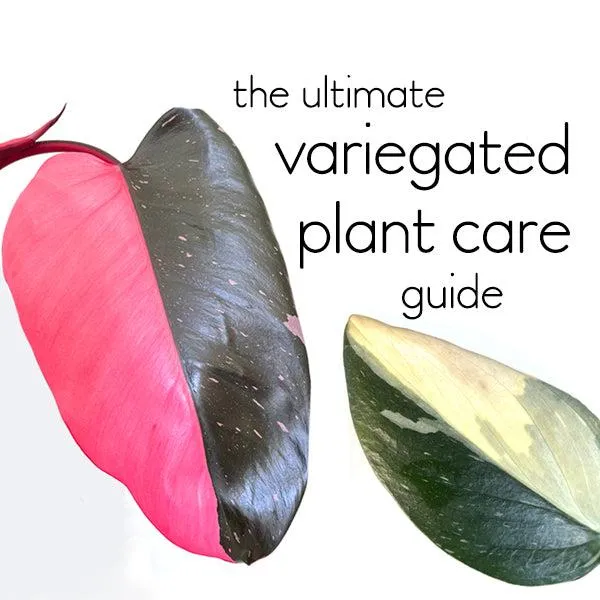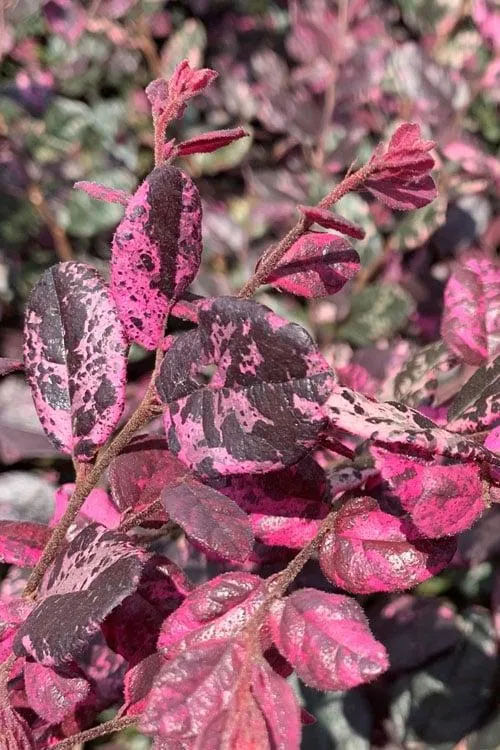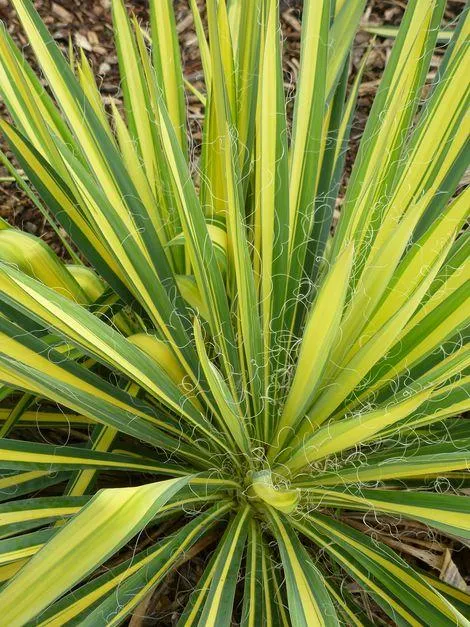Everything You Need to Know About Creating Variegated Plants
If you’re into gardening or houseplants, you’ve probably noticed variegated varieties that feature streaks or splashes of white, yellow or cream against green leaves. The strips of contrasting color create intriguing patterns that catch the eye. Creating your own variegated plants from non-variegated varieties may seem like an advanced gardening task but it’s actually quite achievable with some knowledge and patience.
Understanding Variegation
Variegation occurs when there is a lack of chlorophyll, the pigment that gives plants their green color, in certain areas of the leaves or stem. The stripped pattern forms because these albino regions can’t perform photosynthesis. Variegation has a genetic basis and can come about spontaneously through cell mutations. It’s passed down as a stable characteristic through plant propagation.
Not all variegation is the same though. Some types may be stable over many generations of growth while others revert back to being purely green. Determinate variegation remains constant while indeterminate types can change with every new growth cycle. Stressors like heat, cold or insufficient light may also cause a variegated plant to revert more green over time.
Methods for Creating Variegated Plants
There are a few different approaches hobby gardeners can take to develop variegated forms from non-variegated varieties themselves:
- Tissue culture. By culturing tiny plant cells or meristems in a sterile lab environment, mutations may randomly occur to produce albino cell lines and variegated shoots can be grown from these. However, tissue culture requires specialized equipment and training.
- Air layering. This involves inducing root formation above ground on a stem section by wrapping it in moist sphagnum moss. New growth above the air layer may occasionally sport variegated leaves due to cellular changes. It’s a low-tech method but results are not guaranteed.
- Grafting. Joining the stem of a desired plant variety to the rootstock of a variegated cultivar can sometimes yield a variegated scion. The rootstock’s variegation may be expressed in the new growth. Success rate is moderate with some practice.
The surest approaches generally involve encouraging genetic mutations through propagation techniques like stem or leaf cuttings. This allows for selecting any variegated sports that appear randomly.
Propagating for Variegation
When trying to cultivate variegated forms, it’s best to take many cuttings or divisions from a mother plant and increase your odds of obtaining a variegated sport through one of these basic propagation methods:

- Stem cuttings. Take 6-8 inch cuttings in spring, treat with rooting hormone, and plant in potting mix. Check regularly as occasional leaves may mutate variegated patterns.
- Leaf cuttings. Some plants like begonias can root from leaf trimmings. A variegated section may occasionally form a whole variegated plantlet.
- Division. Dig up and divide established clumps of perennials or ground covers in fall or spring. Inspect new growth for variegation expression.
Isolate any variegated sports that appear for further propagation to stabilize the trait. It may take several cycles of cuttings before a reliable variegated cultivar is obtained. Patience is key!
Caring for Variegated Plants
Variegated plants require some special care compared to their solid green counterparts:
- Light. The albino sections can’t photosynthesize so plants need at least partial sun. Too much shade may cause weak or reverting growth.
- Fertilizer. Use a balanced, dilute liquid fertilizer every 2 weeks in the growing season. Variegated types have less chlorophyll for nutrient uptake.
- Pruning. Cut back leggy stems or remove all-green reversions to encourage bushy, colorful growth. Thin overcrowded leaf clusters too.
- Pests. Watch for issues like mealybugs or spider mites which may be attracted to weakened variegated areas. Act fast with treatment if spotted.
With the right conditions, variegated plants can thrive indoors or out and make a real style statement! Their care is not too much different from typical houseplants or landscaping varieties.
Tips for Stabilizing Variegation
Whether obtained through propagation efforts or acquired as an existing plant, here are some tips to stabilize an indeterminate variegation pattern over successive generations:
- Select heavily variegated cuttings/divisions. Choosing plant pieces with the most color contrast increases the likelihood variegation will carry through.
- Monitor new growth closely. Remove any all-green shoots promptly before they establish to maintain the variegation trait. It often reverts in small increments.
- Provide optimal conditions. Correct care like adequate light and fertilizer strengthen variegated areas and discourage reversion tendencies.
- name=”li”>Retain variegated offspring. Repeated cuttings or divisions from consistently variegated mother plants over many cycles will gradually stabilize the trait.
With diligent selection and propagation of only variegated sections, a historically unstable variety can eventually be “locked in” to reliably express its color patterns. It just takes some persistence and maybe a dose of luck!
Frequently Asked Questions
Here are answers to some additional common queries on creating variegated plants:

Can any plant be made variegated?
While many species can potentially mutate a variegated form, some like certain ferns are less likely to due to their genetics. Easier candidates include common houseplants, perennials, roses and hydrangeas.
How long does it take to develop a new variegated variety?
There’s no set timeline, but it typically requires several months to a couple years of propagation to isolate, stabilize and increase a promising variegated seedling or sport for successful cultivar release. Patience is a must!
Once variegated, will new plants grown from seed also show the pattern?
Sadly no, variegation does not come true from seeds. It must be propagated vegetatively through methods like stem cuttings to maintain the trait in offspring. Growing from seed reintroduces the original non-variegated genetics.
Is variegation caused by a virus or disease?
In most breeding programs, variegation arises due to heritable genetic mutations, not pathogens. Any deterioration in a variegated plant’s health is usually due to secondary infections of normal stresses or cultural issues.
I hope this detailed guide has provided a full picture of how homegrowers can take on the ambitious challenge of creating their own variegated plant varieties! With diligence and a willingness to do many repetitive experiments, fascinating color mutations can be coaxed from nature. The reward is a unique gardening creation that is sure to impress. Let me know if any other questions come up.
How to Choose the Best Plant for Variegation
| Plant Type | Variegation Types | Care Requirements |
|---|---|---|
| Philodendron | Edge variegation, sectoral variegation | Medium light, keep soil slightly moist |
| Pothos | Edges, marble, half-and-half | Low light, allow soil to dry between waterings |
| Peperomia | Sectors, edges, half-and-half | Bright indirect light, keep soil slightly moist |
| Chinese evergreen | Sectors, edges, half-and-half | Medium light, keep soil slightly moist |
| Monsteras | Splash, half-moon | Medium-bright light, allow soil to partially dry between waterings |
FAQ
-
Why do some plants have different colored leaves?
Most of the time, variegated plants have leaves with uneven chlorophyll production. This results in sections that are green and others that are white, yellow or pink. The lack of chlorophyll in certain parts is what causes the colorful patterns.

-
How can you make a plant variegated?
There are a few ways that a plant can become variegated. For one thing, it can occur naturally through genetic mutations. Another method is propagating from stem or leaf cuttings taken from a plant that already shows variegation. You can also induce chimeral variegation artificially through grafting or tissue culture.
-
What kinds of plants commonly have variegated varieties?
Many popular houseplants are available in variegated forms. Some examples include spider plants, prayer plants, pothos vines and philodendrons. Outside, variegated hostas, ligularia, coleus and geraniums are pretty common. Basically any plant that is often grown as a foliage plant might potentially have a variegated cultivar.
-
Are variegated plants harder to care for?
Generally speaking, variegated plants aren’t any more difficult to look after than their solid green counterparts. However, the sections lacking chlorophyll aren’t able to photosynthesize. So variegated plants may grow somewhat slower. You’ll want to give them bright, indirect light to keep the colorful sections healthy. As long as they get the right conditions, care is the same.
-
Why would someone want a variegated plant over a solid green one?
For one thing, the unusual color patterns make variegated plants a lot more aesthetically pleasing to look at! The whites, yellows and pinks liven up a space in a really awesome way. On the other hand, some gardeners think variegated plants are more high maintenance. But their vivid foliage is worth it, if given the care they need to thrive. They can really WOW guests!
-
Are variegated houseplants sometimes more expensive?
It is true that variegated cultivars can be pricier than the standard solid green varieties. This is because the colorful patterns come about from genetic mutations that must be preserved through propagation. Growers basically have to clone these rare traits to meet demand. While variegation itself doesn’t require extra care, you may have to pay more up front for that stunning foliage. Still, the investment is worth it for many plant parents!
-
In summary, what causes variegation?
To wrap things up, variegation in plants is generally the result of abnormal chlorophyll production. This happens due to a genetic quirk or a change induced through grafting or tissue culture. It leads to colorful leaves lacking one or more pigments like green, producing a striped or mottled appearance. While the sections missing chlorophyll photosynthesize less, variegated plants thrive with suitable growing conditions. Their intriguing patterns make them really awesome additions to gardens and homes!

